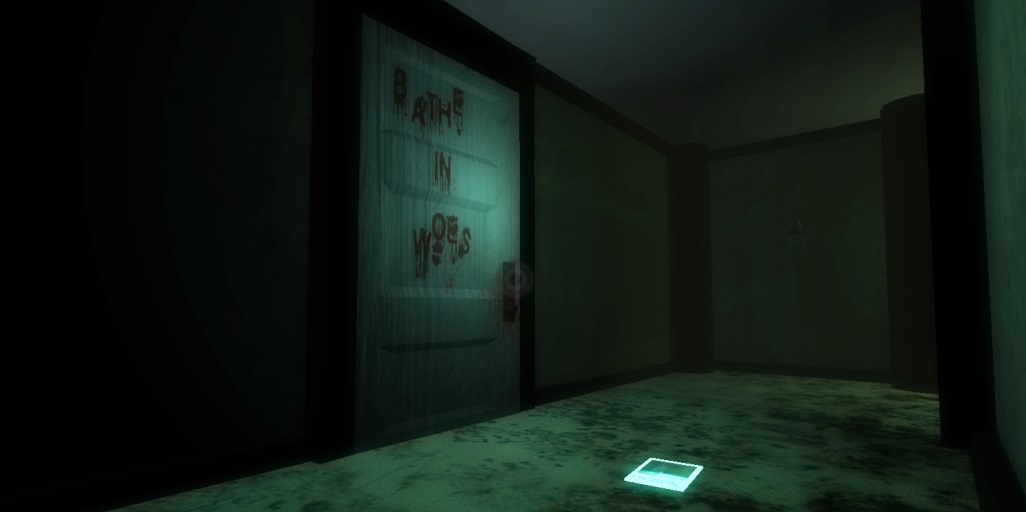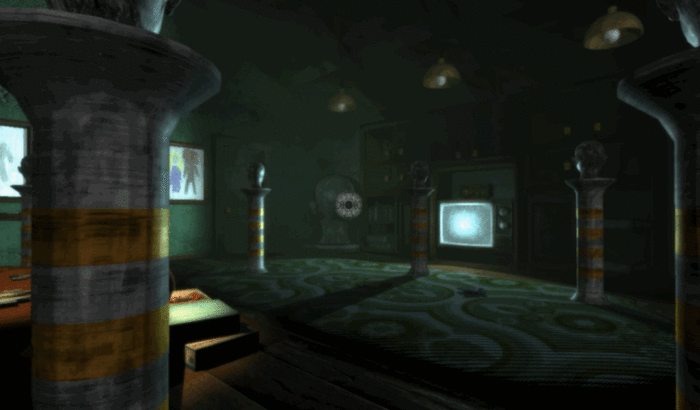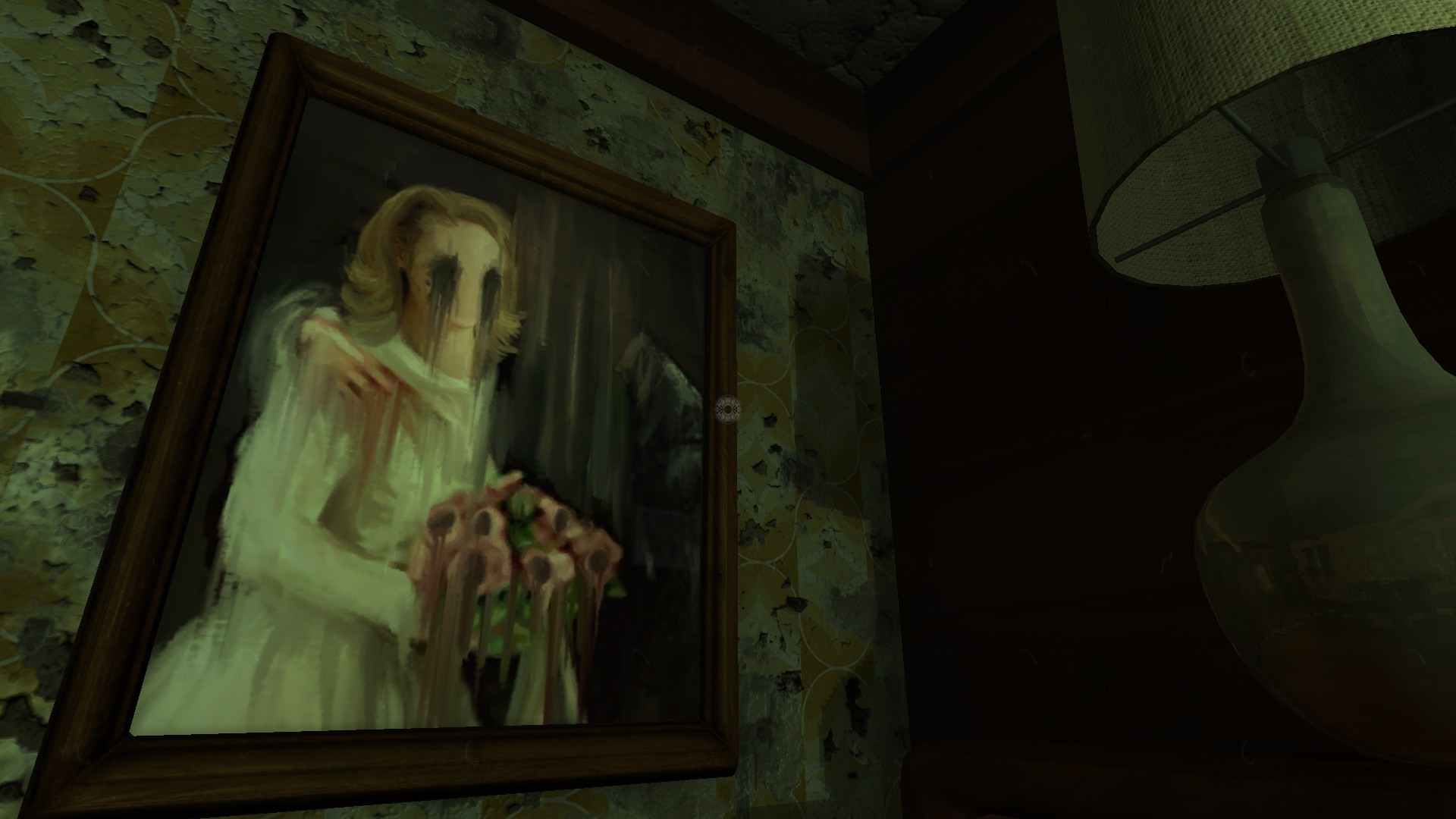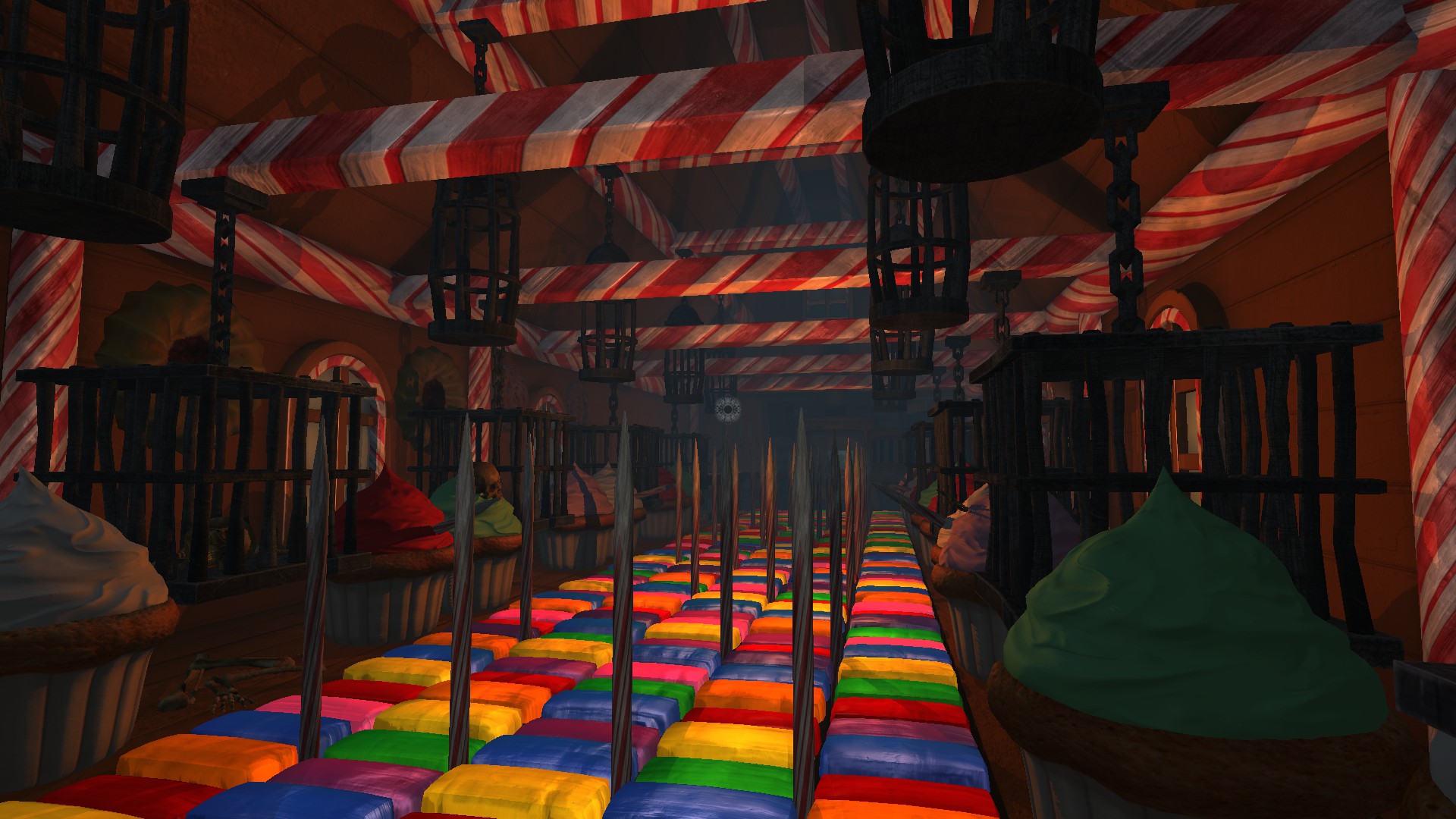 You may have noticed that we’ve been talking about Flying Mollusk’s psychological horror game Nevermind quite a bit this month. Given that it’s our Crowdfunded Game of the Month for October it makes sense. However, in addition to such an illustrious honor Nevermind is worth talking about due to the fact that it’s a great game that’s gone through such a unique journey during its production. To learn more about Nevermind and its development I recently spoke with Crowdfunding Hall of Fame inductee Erin Reynolds.
You may have noticed that we’ve been talking about Flying Mollusk’s psychological horror game Nevermind quite a bit this month. Given that it’s our Crowdfunded Game of the Month for October it makes sense. However, in addition to such an illustrious honor Nevermind is worth talking about due to the fact that it’s a great game that’s gone through such a unique journey during its production. To learn more about Nevermind and its development I recently spoke with Crowdfunding Hall of Fame inductee Erin Reynolds.
Cliqist : Congratulations on the release of Nevermind! How does it feel now that it’s officially released?
Erin Reynolds : Thank you so much! To be honest, it’s a little surreal to have the game officially out there in “the real world.” Nevermind has had a long and fascinating journey over the course of the past four years or so and I feel so grateful that we have been able to reach this incredible milestone for the project. That said, the adventure isn’t over yet! So, while it has been a very celebratory month, we’re still hard at work moving towards the next major milestones for the game.
Cliqist : When your first campaign missed its funding goal did you have doubts that Nevermind would ever see a proper release?
Erin Reynolds : Surprisingly, I didn’t really.
In many ways, I actually felt even more inspired and committed to pursue our ambitions for Nevermind after the end of the first Kickstarter campaign. The response we received from backers, the media, and the industry was so overwhelmingly amazing and encouraging that I knew that we needed (and would eventually) find a way to make it happen.
That’s not say that I didn’t lose sleep over trying to figure out just how we might do that, but my dedication was sufficiently fortified and I knew that this wouldn’t be the end for the project.
Cliqist : Your first campaign raised a lot of money and appeared to have widespread support, but fell short. What do you attribute that to?
Erin Reynolds : That’s a great question and frankly one that I don’t feel I’ll ever have a clear and definitive answer for. As with any crowdfunding campaign, a number of complex factors go into whether it will ultimately make it.
For our first campaign, perhaps one of the easiest elements to identify is the goal level we set. Although we raised a significant amount of money (~$129,615), our goal was, of course, quite high ($250,000). After doing tons of research on how different projects have approached funding goals, we went into the campaign with the mindset that, if we were going to do this, we were going to do things the right way. So, we set our goal at the amount we knew we needed in order to successfully see the most basic version of Nevermind through, even though we knew that a figure that high could prove to be an uphill battle for us during the campaign.
There are some that would say that we should have asked for less than we knew we needed with the hope that we could then meet and exceed our goal by a larger margin, but we weren’t comfortable falsely representing our needs to our backers and supporters. To us, transparency regarding those needs was the very least we could offer to uphold our part of the crowdfunding bargain.
As such, to be honest, if I had to go back to Feb 2014, I probably wouldn’t have done anything differently regarding our funding goal, even knowing that the high target is was probably one of the clearest factors that led to the campaign’s failure.
Cliqist : What were those first days after the initial campaign like for you and the team?
Erin Reynolds : I think the day after the first Kickstarter campaign I slept for about 14 hours (which is a lot for me). Really, those first few days afterwards were about rest, recovery, and reflection.
We were, of course, disappointed in the outcome – mainly because we were so eager to get started on development and were frustrated that it would have to wait a little while longer. However, were also energized all the tremendous support we had received and by all the possibilities on the horizon and wanted to make sure that we didn’t squander the lessons learned from that campaign. We were determined to use it as the invaluable opportunity it was to make the project, the company, and (by association) the team stronger than it would have been otherwise.
I’m glad we took the time to glean as much from the experience as we could in those days following the close of the first Kickstarter campaign. It was only about a week later when we were ultra busy once again – this time because we were heading up to the Game Developer’s Conference where we met up with Intel (who had discovered us through the campaign) and the next amazing chapter of Nevermind really began!
Cliqist : Aside from the technical aspects (funding goal and such), how did the second Nevermind Kickstarter differ from the first?
Erin Reynolds : Our needs and goals changed quite a bit between the first and second Kickstarter campaigns. With the Intel partnership enabling us to build a commercially viable PC version of the core experience featuring three levels, we wanted to focus on finding a way to also be able to enable some of the other potential opportunities for the game that folks seemed most excited about from the first campaign – namely support for Oculus Rift, Xbox One, and Mac, in addition to continuing our goal to support as many sensors as possible. So, we really focused the second campaign around just those goals.
This is a great example of how the things we learned from the first campaign influenced the second (and overall direction of Nevermind’s development over the past year or so). In the first campaign, we made a bunch of presumptions about what we thought players would and wouldn’t be interested in. As such, we figured that players would – first and foremost – be excited about more broad and diverse content, so our first set of stretch goals revolved around additional levels. However, we learned that the majority of our supporters were actually more excited about expanding the technological reach of Nevermind (i.e. different platforms, sensors, etc.) which were previously stretch goals we had set after 4 levels had been funded.
Since we were eager to do both, the order of operations was ultimately less important. With that in mind, we decided about 3/4 of the way through that first campaign to re-adjust the order of our stretch goals directly in response to their feedback – which seemed be an exciting change for many of our backers. Granted, in that first Kickstarter campaign, none of the stretch goals were reached in the end. However, having a better understanding of what our supporters found most interesting was very valuable insight to have going into the second campaign and really informed where we focused our efforts there and beyond.
For our second campaign, we made these new platforms an essential aspect of the campaign, and in turn made the additional levels stretch goals with the hope that we’d have the opportunity to bring Nevermind to the different platforms and have the resources to create additional content. I think if we hadn’t done that research with our supporters and had chosen to focus on content instead of technology for our second campaign, it may not have been the success that it was!
Unfortunately, we didn’t meet our stretch goals the second time around and, as such, needed to keep our tiny team of four fully focused on the core game and broadening our technology base. However, the overall scope and vision that we presented in our first campaign still remains our target end-goal for the project and we remain as optimistic as ever that will be able to continue broadening the technological base of Nevermind as well as develop the additional gameplay content we always envisioned.

Cliqist : How would you describe your post-campaign Kickstarter experience? Is there anything developers considering launching a campaign should consider? Is there something you wish backers knew?
Erin Reynolds : I think many developers go into a crowdfunding campaign looking at it as solely a way to raise funding for their project. While, of course, that aspect is critical, I’d argue it’s actually not necessarily the most valuable aspect of running a campaign.
I cannot stress enough to developers seeking to launch a campaign that building a relationship with your community – the sea of folks out there who believe in your idea so much that they will spend their money and time toward it without any guarantee of a return – is an invaluable gift and opportunity for the team and the project.
Granted, building that community (and spending the time to get them know them) when running a campaign is a colossal amount of work and is equal parts rewarding, exhilarating, and exhausting. Although some might presume that’s merely something you need to deal with while mid-campaign, your relationship with the community doesn’t end once the campaign is over. At minimum, you owe it to your backers to stay in touch – to keep them in the loop, to answer their questions, and to address their concerns.
However, for any developers out there launching or running a campaign, the truth is that you really owe it to yourself to carefully listen to your backers and make them as much a part of the process as you can. Having a supportive and, oftentimes, brutally honest community of people across the world to bounce ideas off of, ask for feedback, and turn to for guidance when you’re at a design crossroads is one of the most valuable treasures a game creator can have. You don’t have to guess what your audience will or won’t like because you can ask them directly and have a better chance of getting it right from the start. Not sure if something is fun (or is even a good idea)? You can find out before it’s too late. I can’t even count how many design flaws and bugs that we were completely blinded to were found by our amazing backers. By and large, your community – your backers – want to be involved, so help them help you.
As far as things I wish backers knew, I can’t say enough how much random notes of support and encouragement can mean to a development team. Believe it or not, we’ve printed out and framed many of the emails and tweets we’ve gotten over the years. Running a crowdfunding campaign is really hard and draining. It’s a great experience, but it can take a lot out of you. I don’t know anyone who has gone through a crowdfunding experience who didn’t find themselves wondering, “what the hell am I doing?!” more than once. Taking a moment to let the developers know that you believe in their project – no matter how silly or small the note may be – can mean the world to them. It always does to us and I know it does to many of the other developers out there.

Cliqist : Nevermind is an interesting game in that it’s out, but is still in the process of growing. Can you tell me what’s next for the game?
Erin Reynolds : Oh yes, we have tons of awesome stuff in store for Nevermind!
First, we’re currently working on finishing up the Oculus Rift and Xbox One versions of Nevermind. While we unfortunately had to move the original targeted release date from this October to early next year, progress on both platforms is going very well.
Second, we intend to start looking at ways we can modify and adapt the currently available “commercial” version of Nevermind to be potentially used in a research and therapeutic setting. We have worked with behavioral health experts and researchers throughout Nevermind’s development, but we hope to collaborate even more closely with professionals in these areas to explore ways that Nevermind (or a variation thereof) might be able to help those experiencing PTSD, clinical anxiety, and other specific conditions.
Finally, we are really hoping that we’ll be able to reinvest any revenue made from sales of the game back into developing more levels. As I mentioned earlier, our original vision and ambition for Nevermind was to have many more levels than what is currently offered. In fact, we already have a ton of concepts that we’re chomping at the bit to develop. We’re just as eager to build and release more levels as our players are and as soon as we feel we have enough resources to commit to doing more, we’ll start doing so right away. Our plan is to make at least the next new level completely free for our existing players and then, should all go well, continue to add a new Clients on a regular cadence – akin to episodic content.
I really love that the technology and distribution platforms of today allow for games to be improved and built upon even after launch. In the past, when you finished a game – it was done, that was it! If something came after the day following “Gold” (basically code lock) that would have made the game 1000x better, there was nothing you could do about it. Now, if you have an opportunity to make the game better, you can! To me, this is a win/win situation for everyone involved.
Sure, some might argue that if there is more to be done then the game isn’t really “done”. However, I’d argue that if you always wait until everything is perfect, then all too often it will never see the light of day. So, I’m thrilled that we launched with what we have – the PC/Mac game that was promised to backers back in October of last year – and even more excited by the fact that that this is by no means the end for the project.

Cliqist : Some have complained that Nevermind is too short, but those that have followed the Kickstarter were already well aware of what to expect, so it’s not as if the game’s length was a secret. How do you respond to concerns regarding the game length?
Erin Reynolds : Yeah, that has been a very interesting and, to be honest, a somewhat surprising phenomenon to observe.
When we committed to the three levels (IntroSim, Client #251, and Client #418) as part of the October 2015 Kickstarter campaign, I think that all of us (both the team and our backers) knew that the initial launch was going to be a relatively short-form experience (not unlike games like Gone Home, which – as of the second campaign – had recently been released). Almost everyone who had been a part of Nevermind’s journey knew what to expect and understood the constraints we were working within.
However, once we officially launched Nevermind, it was exposed to a brand new audience who had no context in terms of what to expect per our development journey. As such, I think the game’s 4-hour length came as quite a bit of a shock and disappointment for many – particularly in light of Nevermind’s $19.99 price point on Steam. So much so that it has actually led to quite a few reviews where a review goes to great lengths describing how much they enjoyed the game, but then give it a “thumbs down” because of its length.
On the one hand, it’s quite the compliment that some players want to play more of the game so much that it drives them to anger! That said, it also is problematic in that it’s apparent that many of the product expectations weren’t adequately set. For example, it’s clear from many of the comments that many players don’t realize that Nevermind was developed by a small indie team of only 4 full-time developers, while also juggling implementation of cutting edge biofeedback integration (and all the device-specific complexities that go along with it).
As much as we try to look on the bright side, candidly, it can also be incredibly disheartening at times to have worked so hard to simply take the experience we’ve been promising from the start and hit it out of the park, and yet to have it critiqued based on some assumptions that come from a lack of context. All that aside, having realized that our new players inherently won’t have the same frame of reference as our backers, we’ve since gone out of our way to disclaim key information (like the game’s length) prominently in the store description to help align everyone’s expectations accordingly right off the bat.
I think that’s really the key takeaway here: as tempting as it can be to blame your customers or playerbase, at the end of the day, it was our fault for not having stepped back and realized that issue sooner, and thus it’s on us to correct it as best we can ASAP. When you spend so long developing a game alongside your backers, it’s surprisingly easy to forget that not everyone (in fact, very few!) will have the same level of insight into the intended scope of project, your design decisions, your constraints, etc. that your backers have. As a result, it’s important to try to go out of your way to communicate the all the key information people need to know before purchasing your game as clearly as possible – even if it does seem “old news” to you as a developer and to the community you have been working most closely with.

Cliqist : What’s your favorite part about Nevermind?
Erin Reynolds : Helping people. Whether it’s helping people learn how to better identify and manage feelings of stress, potentially helping people understand what psychological trauma and PTSD can be for some, helping to humanize trauma and PTSD, or even just helping players escape for a while to challenge themselves in interesting ways, knowing that Nevermind may be able to do any of the above in any small way is perhaps my favorite part of the project (and I have a lot of favorite parts of it).
Cliqist : Outside of the Kickstarter, was there anything about developing Nevermind that proved especially frustrating or difficult?
Erin Reynolds : Working with new technology is a tremendous privilege and an exhilarating experience. It is also incredibly challenging and frustrating at times. For example, in our efforts to support as many mainstream sensors out there, we’ve run into a number of challenges including having to work around the fact that most heart rate sensor manufacturers aren’t interested in sharing any APIs or opening it up to be compatible with computers instead of simply with mobile devices. It would seem that many manufacturers don’t see the immediate potential of integrating a HR sensor with anything beyond a mobile fitness app – we hope Nevermind will help change their mind soon enough! We’re working on it every day, but the slow-going-ness of that aspect of Nevermind has been particularly challenging – especially since so much of that is out of our hands.
That said, things are improving every day as new sensors are released out on the market and as manufacturers are starting to realize that are opportunities for biofeedback out there beyond exercise apps. So, we remain as optimistic as ever.

Cliqist : There are a lot of horror games out there right now. What would you tell to someone that’s on the fence about buying Nevermind?
Erin Reynolds : Nevermind is anything but your traditional horror game. So much so that we’ve actually started to stray away from calling it one!
When it comes down to it, we’ve found that Nevermind is really more of a terror, mystery, or thriller game than it is a “horror” game. Unlike many of the “survival horror” games out there (which is what often comes to mind when the average player thinks of a horror game), Nevermind has very few jump scares, not much gore, and really no monsters in the traditional sense. Instead, Nevermind is really more of a dark and twisted atmospheric experience. Think a David Lynch or Tarsem Singh directed Myst. We try to craft an experience that builds tension and slowly gets under your skin.
So, I would tell anyone that if they’re looking for a fast paced action packed game in which they’re fighting zombies or being chased by monsters, then Nevermind is likely not be the right game for them. However, if something surreal and psychological that will linger with you for days after you play it is more your cup of tea, then Nevermind is definitely worth checking out – whether or not you have a biofeedback sensor handy!
Nevermind is our October 2015 Crowdfunded Game of the Month and can be found on Steam.





[…] 10/29 – A Chat With Erin Reynolds About Psychological Horror Game Nevermind […]